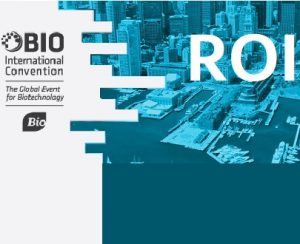
CRB Group Has Hand in Providing Space for Philadelphia’s Life Sciences Ecosystem
Philadelphia is seeing a significant expansion of new facility space for cell and gene therapy and other life sciences companies through expansions of sites like Discovery Labs, or the redevelopment of the vacant Budd Plant. Joining the ranks is the recent opening of the Amicus Therapeutics’ Global Research and Gene Therapy Center of Excellence and a facility for Iovance in the city’s Navy Yard.
The Amicus facility, coupled with an expansion of its gene therapy collaboration with the University of Pennsylvania, allows the company to expand its pipeline of therapeutics for lysosomal storage disorders and rare diseases such as Rett Syndrome, Angelman Syndrome, and select other muscular dystrophies.
For Amicus, the expansion is expected to allow the company to bolster its presence in Philadelphia, and become an attractive centerpiece to showcase to potential employees. And that was the intention of the design team at CRB.
Viktoriya Lupareva, NCIDQ, an Interior Design Lead at CRB, a leading provider of sustainable engineering, architecture, construction, and consulting solutions to the food and beverage and life sciences industries, said form and function are integral to the space. For Amicus, Lupareva said CRB wanted to create an inspirational facility so Amicus could retain and attract talent.
“They wanted to have an innovative facility that inspires from the moment you walk in,” Lupareva said.
The Amicus facility encompasses 75,000 square feet of the top three floors of a new building located on Market Street in Philadelphia. The space includes office space, as well as state-of-the-art laboratories. It’s expected to provide space for approximately 200 researchers and drug developers focused exclusively on gene therapies.
CRB designed the space to be open and inviting for collaboration and inspiration among the employees, Lupareva added.
Scott McNallan, Director of Architectural Design at CRB, noted that many gene therapy companies are firmly rooted in their origin stories, which is often reflected in the design and function of the spaces they occupy. Amicus Chairman and Chief Executive Officer John Crowley is well known in the rare disease space. Both of his children were diagnosed with the rare lysomal disorder known as Pompe disease. In order to find the best treatment for them, Crowley, an attorney by training, secured a job in the life sciences industry, desperately seeking a treatment for his children.
Ultimately, Crowley founded Novazyme Pharmaceuticals with the aim of developing a treatment for Pompe disease. Researchers at Novazyme developed an enzyme replacement therapy that has not only allowed Crowley’s children to live long past their initial life expectancy, but also provided the same hope for other children with the rare disease. After serving on the board of directors of Amicus, Crowley became CEO of the company to advance treatments for other rare diseases.
“Crowley’s children and the other children with these rare diseases are so important to the story of Amicus,” McNallan said. “These children and their families come to the facility and we had to make sure the environment reflected that purpose they serve.”
While Amicus is enjoying its new digs, McNallan predicted more usable lab space for the life sciences will be developed in Philadelphia to meet the needs of the growing biopharma hub. Some of the facilities are expected to be built to a company’s specifications, while others are likely to be built as speculation properties, McNallan said.
“It’s one of the largest growing markets for cell and gene therapy, it’s a market that’s really blowing up,” said McNallan, who assisted on the design of both the Amicus project and ongoing Budd Plan renovations.
In terms of life sciences architectural development, CRB designs and develops spaces for use by life sciences companies with unique challenges when it comes to meeting the needs for form, function, science and technology.
“We have 1,600 people across the company with the majority focused on the life sciences. We understand all the specific challenges the projects entail,” McNallan said.
As Philadelphia continues to grow as a key biopharma hub, McNallan said there is a concerted effort to meet the demands for office and wet lab space. A recent report from CBRE Americas Research noted that Philadelphia has an approximate 17% vacancy for available wet lab space. The report noted that Philadelphia is the leading hub for new wet lab space in the U.S. Building on that report, McNallan said there are multiple responses to the increasing needs and predicted that over the next three to five years, there will be ample space in the city. As an example, he noted that in the Navy Yard there is a site being built on spec that will be able to accommodate a wide range of life sciences uses.
When it comes to reuse of an existing facility like the Budd Plant, McNallan said there are numerous issues his team faces, particularly when it comes to vibration sensitivity. A former automotive metals fabrication plant, the Budd had been vacant for a half-century. With nearby train tracks, there were multiple vibration issues that had to be addressed, McNallan said. He noted that many of the test animals used in laboratory research are sensitive to those vibrations, which can impact the ongoing research.
Other challenges that had to be addressed included floor loading capabilities and floor-to-floor heights. For Iovance, the tenant improvements in the 136,000 square foot facility in the Philadelphia Navy Yard was designed and developed by CRB for commercial and clinical production of autologous tumor-infiltrating lymphocyte (TIL) products. The site was completed earlier this year and is now manufacturing clinical TIL supply.






